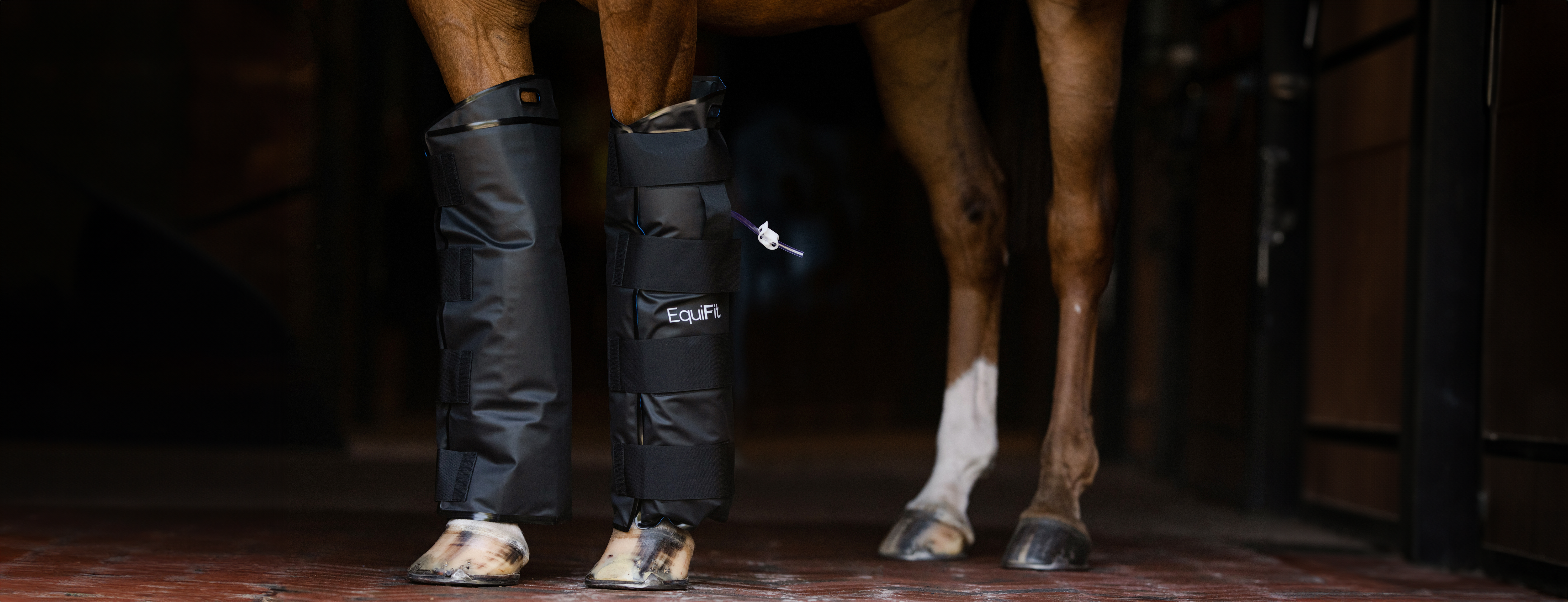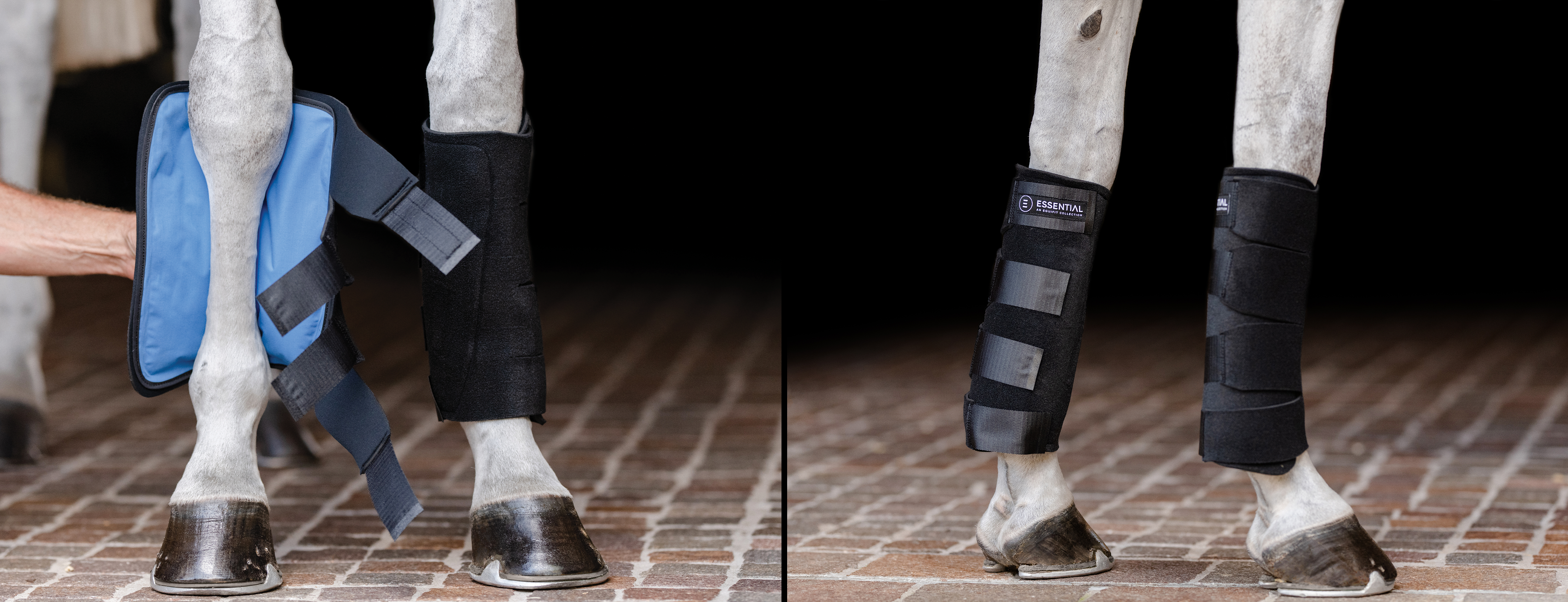Your Cart is Empty
March 13, 2024

Whether you’re involved in an equestrian sport like show jumping, dressage or three-day eventing, or you’re a non-competitive rider, we know you want your horse to feel his best. Optimal recovery from exercise & injury is crucial to horses’ wellbeing, performance & longevity. At a fundamental level, managing inflammation is the primary component of supporting the body's repair & healing processes. While there are various methods to help regulate the inflammatory response in equine athletes, cold therapy stands out as one of the most proven, time-tested, & highly effective approaches. This practice is relied upon by veterinarians & the world’s most experienced equine caretakers for good reason.
Inflammation is the body’s normal response to injury, infection, or irritation. A certain level of inflammation is normal & necessary for the body’s healing & defense processes, so inflammation is not all bad. Acute forms of inflammation show up as redness, swelling, heat, & pain, but chronic inflammation at the cellular level is more insidious. This means it may not have obvious outward signs until problems become more advanced.
In horses, inflammation can happen in any area of the body & may be the result of strenuous exercise, injury, arthritis (degenerative joint disease), illness, parasites, stress, poor nutrition, & more. Inflammation is also the primary component of specific health conditions such as laminitis, cellulitis, & uveitis, just to name a few. Left unmanaged, inflammation can impede your horse’s recovery, compromise his performance, & lead to a cascade of chronic health issues. In hard working performance horses, managing inflammation of the tendons, ligaments, joints, & muscles is an important component of a comprehensive care & conditioning program. Keeping the horse’s lower limbs healthy is of utmost importance.
Cold therapy, also known as cryotherapy, involves the application of cold temperatures to targeted areas of the body. This therapeutic modality plays a pivotal role in managing inflammation by constricting blood vessels, reducing blood flow, & decreasing metabolic activity in the affected tissues. As a result, cold therapy helps mitigate swelling, alleviate pain, & promote healing.

While cold therapy offers significant advantages, it's essential to implement correctly to maximize effectiveness & ensure the horse's safety:

Cold therapy can be administered through various methods, including:
+ Essential® Cold Therapy Tendon Boot
+ Hot/Cold Therapy TendonPak™ with Elastic Wrap
+ HoofIce™
Cold therapy is a cornerstone in the management of performance horse soundness. It offers a safe, effective, non-invasive means of alleviating discomfort, reducing swelling, & promoting healing. It is important for horse owners, riders, & equine caretakers to understand the role of cold therapy & the best practices for its application. With this knowledge & the right tools, we can enhance our equine partners’ well-being, recovery & performance, ensuring they stay happy, healthy, & sound for years to come.
Kaneps, Andris. (2000). Tissue temperature response to hot and cold therapy in the metacarpal region of a horse. Proc Am Assoc Equine Pract. 46. 208-213.
Kaneps, A., King, M. (2020). Practical Equine Rehabilitation: Review of Available Modalities. KanepsEquine.com.http://kanepsequine.com/wp-content/themes/twentyten/images/Equine-Rehab-Kaneps-2020.pdf
Miklowitz SL: Thermal Agents in Rehabilitation. 2nd Ed. FA Davis Co, Philadelphia, 1996
Smith, Roger. (2008). Tendon and Ligament Injury. AAEP Proceedings. 54. 475-501.
“Cold Therapy & Ice Bandages.” AAEP.org.https://aaep.org/issue/cold-therapy-ice-bandages